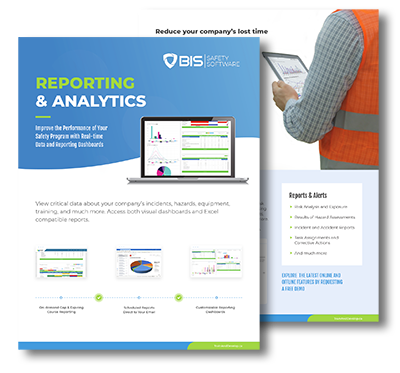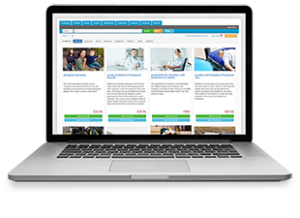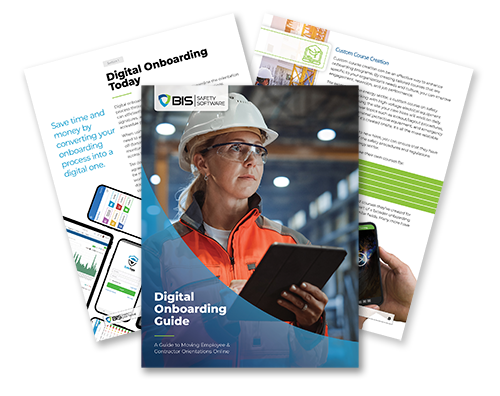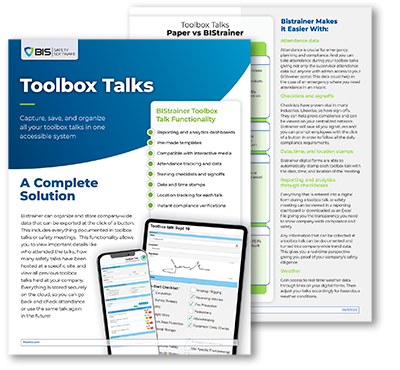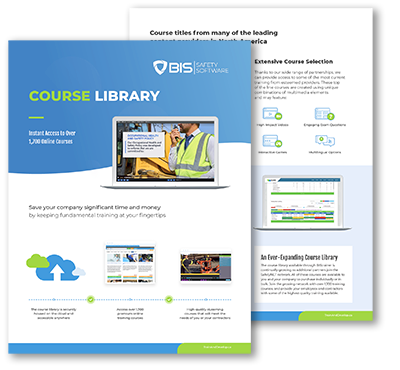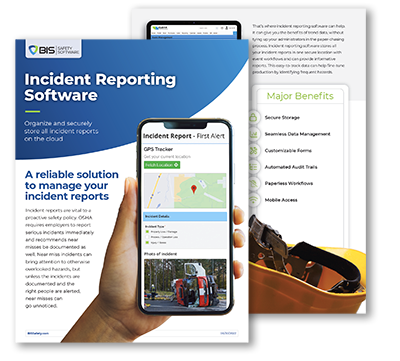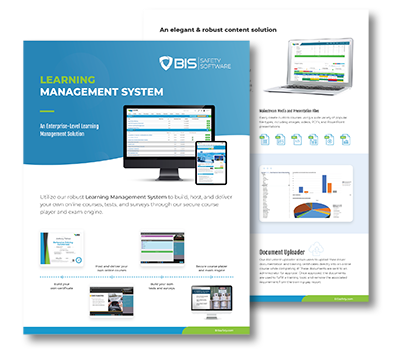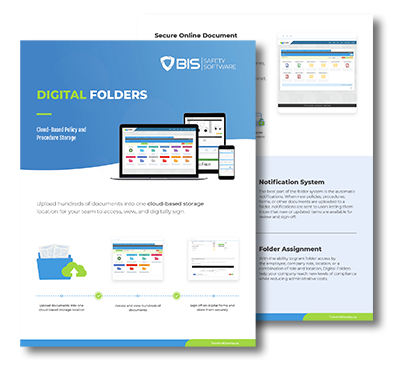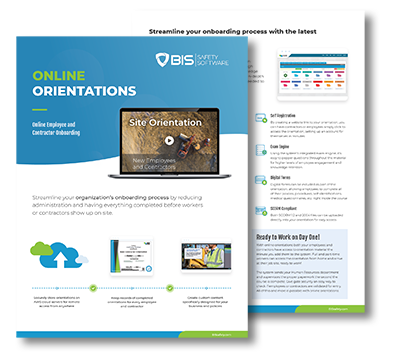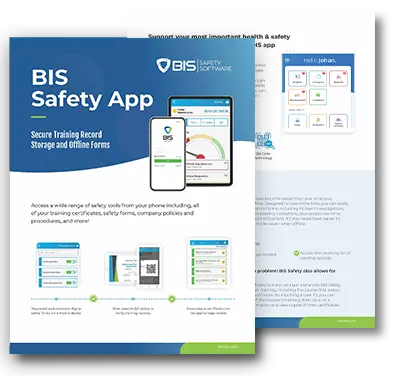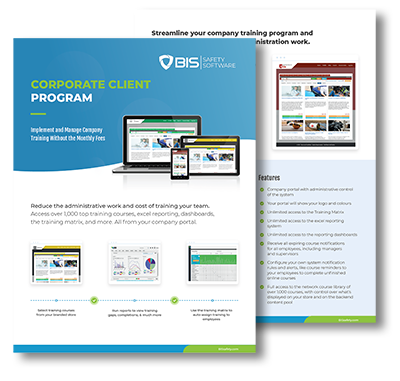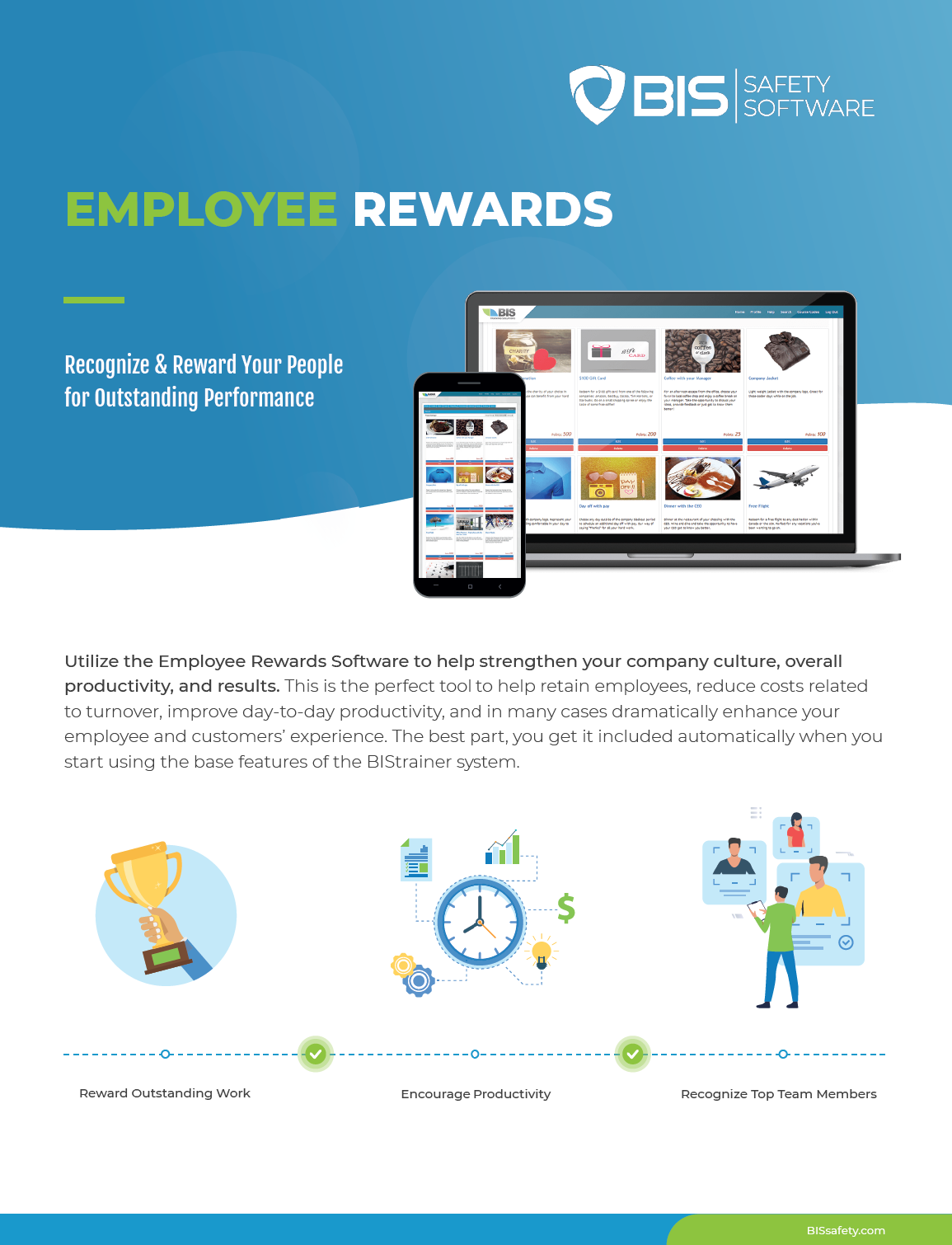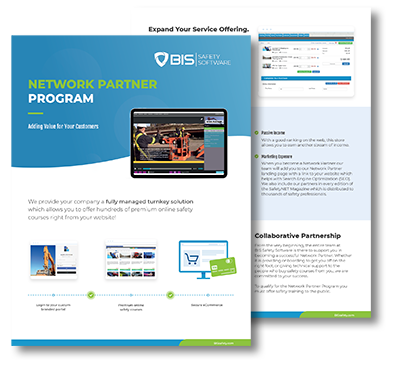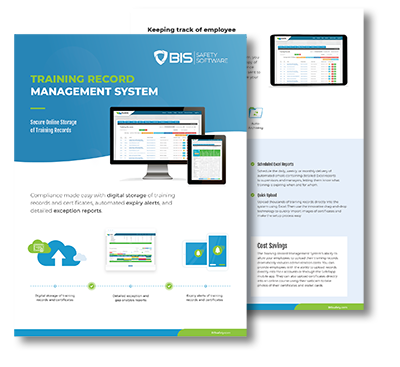How to Choose the Best EHS Risk Assessment Software Tool for Your Needs
Table Of Contents:
-
- Understand Your EHS Risk Assessment Needs
- Key Features to Look for in EHS Risk Assessment Software
- Assess the Top EHS Risk Assessment Software Tools
- Evaluate Compatibility With Your Business Operations
- Evaluate Compatibility With Your Business Operations
- Consider Budget and Return on Investment
- Plan for Implementation and Training
- Conclusion
Choosing the right EHS risk assessment software tool is critical for maintaining workplace safety and ensuring regulatory compliance. Many businesses struggle to find a solution that meets their specific needs while providing valuable insights into their health and safety processes. This article will explore essential criteria for selecting software, focusing on key features, compatibility with existing operations, and budget considerations. By understanding these factors, readers will be better equipped to make informed decisions that enhance their risk assessment capabilities and streamline their process safety management efforts.
Understand Your EHS Risk Assessment Needs

Evaluating current risk management processes is critical for understanding specific environmental, health, and safety challenges within an organization. Defining goals for utilizing an EHS risk assessment software tool further clarifies needs, while determining essential features ensures the chosen interface aligns with requirements for safety and certification. This analysis lays the groundwork for informed decisions about software intelligence and audit functionality.
Evaluate Current Risk Management Processes
Evaluating current risk management processes involves a critical examination of existing protocols related to environmental health and safety. Organizations must document their practices to identify gaps and inefficiencies, which can hinder workplace safety. By utilizing tools like KPA Flex within an integrated EHS system, businesses can streamline their risk assessments and enhance overall compliance, ensuring that safety measures are not only established but continuously improved upon.
Identify Specific Environmental, Health, and Safety Challenges
Identifying specific environmental, health, and safety challenges requires a systematic approach that combines data analysis and hazard analysis. By assessing existing safety protocols, organizations can pinpoint weaknesses in their process safety measures, allowing them to implement targeted improvements. A robust software solution can aid in the identification of these challenges, ensuring compliance with environmental protection standards and enabling organizations to maintain a safe workplace.
-
- Conduct thorough data analysis of existing safety measures.
- Perform hazard analysis to identify potential risks.
- Evaluate process safety management practices for improvements.
- Leverage software solutions to streamline the identification process.
- Establish a framework for environmental protection compliance.
Define Goals for Using a Software Tool
Defining specific goals for using an EHS risk assessment software tool is essential for enhancing workforce efficiency and strengthening incident management systems. Organizations in the construction industry, for example, should aim to foster a culture of safety by utilizing software that facilitates real-time monitoring and reporting of safety incidents. By clarifying these goals, businesses can select the most suitable software that addresses their unique challenges and enhances overall workplace safety.
Determine Essential Features for Your Organization
Determining essential features for an organization’s EHS software solution is fundamental to enhancing workplace safety and quality management. Organizations should prioritize features that foster employee engagement, such as user-friendly interfaces and real-time reporting capabilities. A robust software should also facilitate compliance with global regulations, enabling organizations to maintain high standards in environmental, health, and safety practices.
Key Features to Look for in EHS Risk Assessment Software
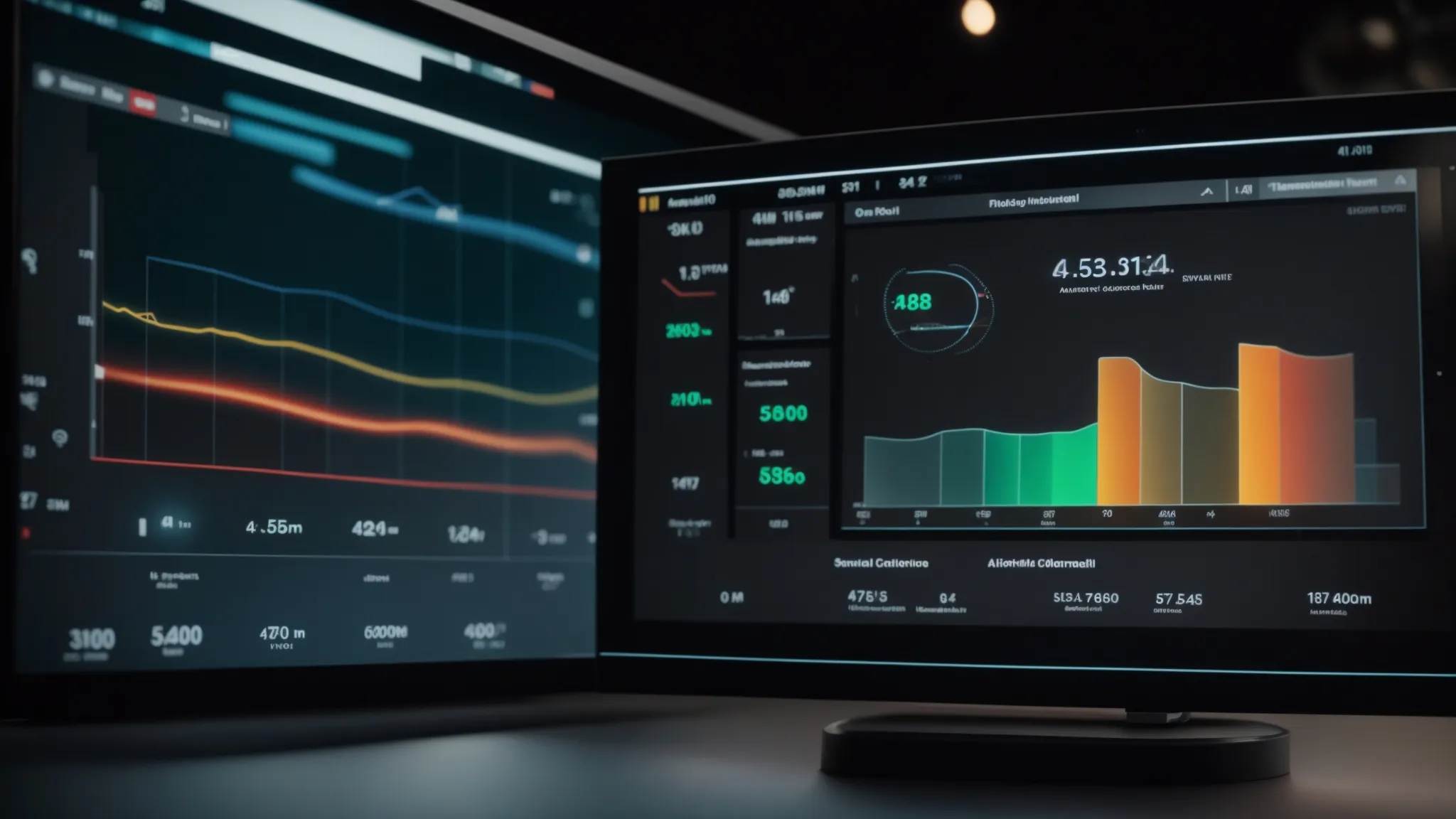
Key features in EHS risk assessment software tools are critical for effective safety management. A user-friendly interface and customization options enhance usability, while real-time reporting and analytics allow for timely insights into risks. Compliance management ensures adherence to regulatory standards, and integration capabilities with existing systems facilitate seamless operations. Mobile access and cloud-based solutions further enable versatile engagement with safety management tools.
User-Friendly Interface and Customization Options
A user-friendly interface is vital for effective risk management software, ensuring that stakeholders can easily navigate the system regardless of their technical proficiency. Customization options allow organizations to tailor the software to their specific governance needs, making the training process more efficient and relevant. Whether accessed online or offline, such adaptability enhances the overall user experience, ultimately leading to better engagement in safety practices and improved compliance across the organization.
Real-Time Reporting and Analytics
Real-time reporting and analytics are essential features in EHS risk assessment software tools, as they facilitate immediate data collection and analysis related to health and safety incidents. This capability empowers organizations to swiftly identify trends in injury rates and assess the effectiveness of their risk management strategies. By leveraging real-time insights, companies can make informed decisions on pricing strategies for safety programs and proactively mitigate potential risks before they escalate:
-
- Enhances immediate visibility into safety data.
- Identifies trends in injuries for targeted interventions.
- Supports informed decision-making for pricing safety measures.
- Facilitates timely compliance with health and safety regulations.
Compliance Management With Regulatory Standards
Compliance management with regulatory standards is a critical component of operational risk management in any organization. Effective EHS risk assessment software should provide automation features that help companies maintain adherence to safety regulations, fostering a proactive safety culture. For example, solutions like Benchmark Gensuite offer tools that simplify compliance tracking and reporting, allowing organizations to swiftly address any gaps and enhance their overall safety management protocols.
Integration Capabilities With Existing Systems
Integration capabilities with existing systems are crucial when selecting EHS risk assessment software tools, as they allow for seamless data flow across various platforms. Effective integration enhances accessibility to analytics and reporting features, enabling organizations to conduct thorough root cause analysis of incidents. By connecting with current EHS management systems, businesses can streamline risk management processes, ensuring accurate data utilization and fostering a proactive approach to workplace safety.
Mobile Access and Cloud-Based Solutions
Mobile access and cloud-based solutions are vital features for EHS risk assessment software, as they provide EHS professionals with the flexibility to monitor safety protocols and manage risks in real-time. With the ability to access data remotely, companies can ensure better visibility over safety measures, particularly when managing dangerous goods in various environments. Ultimately, such solutions support the sustainability of safety initiatives by enabling prompt decision-making and effective utilization of resources across the organization:
Assess the Top EHS Risk Assessment Software Tools

When choosing the best EHS risk assessment software tool for specific needs, organizations should begin by researching industry-leading software providers. A thorough comparison of software functionality and features is essential, alongside reading user reviews and case studies to understand real-world applications. Additionally, evaluating customer support and service quality ensures that the selected EHS software solutions will provide the necessary assistance for effective implementation and workplace inspections.
Research Industry-Leading Software Providers
Researching industry-leading software providers is essential for selecting the best EHS risk assessment tool tailored to an organization‘s needs. A thorough analysis of providers should include their track records in implementing job safety analysis, their capabilities in identifying operational risk, and features that effectively manage hazards. Organizations can benefit from comparing user reviews and feedback to ensure they choose a provider that delivers robust support and meets specific EHS requirements:
-
- Identify top EHS software providers through market research.
- Evaluate capabilities in job safety analysis and operational risk management.
- Consider feedback and reviews from current users to assess reliability.
- Explore case studies to understand practical applications and outcomes.
- Assess technical support and customer service quality offered by providers.
Compare Software Functionality and Features
When comparing software functionality and features for EHS risk assessment tools, organizations should evaluate how well each solution addresses specific safety management needs. Key factors to consider include the software’s ability to streamline incident tracking, facilitate compliance management, and provide robust reporting capabilities. Practical examples, such as real-time analytics for injury trends, can demonstrate how certain tools enhance decision-making and improve overall workplace safety.
Read User Reviews and Case Studies
Reading user reviews and case studies is an essential step in selecting the best EHS risk assessment software tool. These insights provide real-world experiences from organizations that have utilized specific solutions, shedding light on their effectiveness in enhancing workplace safety and compliance. By examining feedback regarding features such as user interface, customer support, and practical outcomes, decision-makers can make informed choices that align with their operational needs and safety goals.
Evaluate Customer Support and Service Quality
Evaluating customer support and service quality is essential when selecting an EHS risk assessment software tool. Organizations should consider the responsiveness and expertise of the support team, as that can significantly impact the successful implementation and ongoing use of the software. For instance, a provider that offers 24/7 support and comprehensive training resources will facilitate a smoother integration process and ensure that users are well-equipped to utilize the tool effectively, thereby enhancing overall workplace safety and compliance.
Evaluate Compatibility With Your Business Operations

Evaluate Compatibility With Your Business Operations
To effectively choose the best EHS risk assessment software tool, organizations must ensure compatibility with their existing business operations. This includes checking system requirements and technical specifications to confirm functionality. Data security and privacy compliance are also critical considerations. Additionally, testing software performance through free trials or demos allows for practical evaluation, while consulting with IT and EHS teams provides valuable feedback on usability and integration within current processes.
Check System Requirements and Technical Specifications
Checking system requirements and technical specifications is a fundamental step in selecting the right EHS risk assessment software tool that aligns with an organization’s operations. Companies must ensure that their existing hardware and software infrastructure can support the new tool, minimizing disruptions during implementation. For instance, understanding whether the software is cloud-based or requires on-premise installation can significantly impact user access and collaboration. By verifying compatibility early in the selection process, organizations position themselves to make a smooth transition, thereby enhancing overall efficiency and workplace safety.
Ensure Data Security and Privacy Compliance
Ensuring data security and privacy compliance is paramount when selecting an EHS risk assessment software tool. Organizations must verify that the software provider adheres to industry standards and regulations, such as GDPR or HIPAA, to protect sensitive information effectively. This diligence not only safeguards the organization‘s data but also builds trust with employees and stakeholders, demonstrating a commitment to responsible data management.
-
- Verify software provider compliance with industry regulations.
- Assess security measures for protecting sensitive information.
- Evaluate the data handling processes to build stakeholder trust.
Test Software Performance With Free Trials or Demos
Testing software performance through free trials or demos is a practical approach for organizations to assess the suitability of EHS risk assessment tools. This hands-on experience allows users to evaluate how well the software integrates with existing processes and whether it meets their specific features and usability requirements. By engaging with the software firsthand, decision-makers can identify potential challenges and ensure that the chosen solution aligns with organizational goals, ultimately enhancing overall safety management and compliance efforts.
Consult With IT and EHS Teams for Feedback
Consulting with IT and EHS teams is essential for selecting a compatible EHS risk assessment software tool. These teams can provide valuable insights into system requirements, integration capabilities, and security considerations that align with the organization’s existing infrastructure. Real-world feedback from these departments ensures that the chosen software not only meets operational needs but also enhances overall safety management effectiveness.
-
- Gather feedback from IT for integration and system requirements.
- Engage EHS teams to understand safety compliance and operational workflows.
- Ensure the software aligns with existing technical infrastructure.
- Evaluate security and data privacy implications based on team input.
- Facilitate discussions to address any potential usability challenges.
Consider Budget and Return on Investment

When selecting the best EHS risk assessment software tool, organizations must consider their budget and potential return on investment. This involves analyzing pricing models and subscription costs, calculating possible cost savings and efficiency gains, and exploring financing options or bundled services. Additionally, assessing the long-term value versus initial expenditure will provide insights into the financial impact of the chosen solution.
Analyze Pricing Models and Subscription Costs
Analyzing pricing models and subscription costs is a vital step when selecting an EHS risk assessment software tool. Organizations should assess various pricing structures, including one-time fees, monthly subscriptions, or tiered pricing based on features and user access. Understanding the total cost of ownership, including potential hidden costs such as implementation and training, enables companies to make informed financial decisions that align with their budgetary constraints and anticipated return on investment.
Calculate Potential Cost Savings and Efficiency Gains
Calculating potential cost savings and efficiency gains is essential for organizations when selecting an EHS risk assessment software tool. Companies should assess how the software can streamline compliance processes and reduce incident-related costs, such as fines and lost productivity. By analyzing metrics such as incident reduction rates and time saved on reporting and audits, organizations can obtain a clearer understanding of the return on investment, ensuring that their chosen software not only fits their budget but also contributes to long-term financial health.
Explore Financing Options or Bundled Services
Exploring financing options or bundled services can significantly impact the overall cost-effectiveness of EHS risk assessment software tools. Many providers offer flexible pricing models, such as subscription plans that include dedicated support and training resources, which help organizations maximize their investment. By assessing the potential savings associated with bundled services, companies can determine the best approach to align their financial strategies with their safety compliance objectives, ultimately enhancing their return on investment.
Assess Long-Term Value Versus Initial Expenditure
Assessing long-term value versus initial expenditure is crucial when selecting an EHS risk assessment software tool. Organizations should not only consider the upfront costs but also evaluate the potential savings generated through improved compliance, reduced incident rates, and enhanced operational efficiency. By calculating metrics such as potential reductions in fines and increased productivity, decision-makers can gain a comprehensive understanding of how the software will positively impact their financial health over time.
Plan for Implementation and Training

Developing a step-by-step implementation strategy is essential for a successful transition to EHS risk assessment software. Organizations must schedule training sessions for staff to ensure effective usage, while also setting up support channels and resources for ongoing assistance. Monitoring progress and gathering feedback post-implementation allows for continual improvement and integration of the software into daily operations, reinforcing the commitment to workplace safety.
Develop a Step-by-Step Implementation Strategy
Developing a step-by-step implementation strategy for EHS risk assessment software is essential for a seamless transition and effective use. Organizations should start by identifying key stakeholders and creating a detailed timeline with specific milestones to track progress. Including training sessions tailored to employee roles ensures that the workforce can efficiently navigate and utilize the software, addressing any initial concerns or challenges that may arise during the onboarding process.
Schedule Training Sessions for Staff
Scheduling training sessions for staff is a critical component of successfully implementing an EHS risk assessment software tool. By organizing these sessions, organizations equip employees with the necessary skills to navigate the software effectively, which directly impacts their ability to conduct thorough risk assessments and maintain compliance. Tailoring training to specific roles ensures that all team members understand the software’s features and functions, promoting confidence and engagement while reducing the risk of errors in safety management processes.
Set Up Support Channels and Resources
Setting up efficient support channels and resources is vital for organizations implementing EHS risk assessment software. Establishing clear lines of communication, such as dedicated help desks or online forums, ensures users can quickly resolve issues and share best practices. Additionally, providing comprehensive resource materials, including user manuals and training videos, empowers staff to maximize the software’s features and promotes a culture of safety within the workplace.
Monitor Progress and Gather Feedback Post-Implementation
Monitoring progress and gathering feedback post-implementation is essential for ensuring that the chosen EHS risk assessment software tool meets organizational needs effectively. Utilizing performance metrics to assess user engagement and software functionality can highlight areas for improvement and optimization. Engaging employees in feedback sessions provides valuable insights that not only enhance the software’s utility but also reinforce a culture of safety throughout the organization, ensuring compliance and ongoing effectiveness of risk management practices.
Conclusion
Choosing the best EHS risk assessment software tool is vital for enhancing workplace safety and ensuring regulatory compliance. Organizations must thoroughly evaluate their current risk management processes, identify specific safety challenges, and define clear goals to align their software selection with operational needs. Prioritizing essential features, ensuring compatibility with existing systems, and considering budget implications enhance the overall effectiveness of the chosen solution. By investing in the right software, organizations not only improve their safety management practices but also create a culture of proactive risk mitigation that benefits all stakeholders.










